THE BEAUTY AND ANCIENT HISTORY OF IRAN WELCOME YOU!
Learn about the cities you will visit on your journey.
When you visit Iran, you will experience a beautiful, diverse country rich with history, art, folklore and culture. Learn more about the country and the cities where you will visit.
Shiraz
According to Islamic historians, Shiraz came into existence only after the Arab conquest of Iran. The Arab invasion, in fact, contributed to its importance and by the 13th century, Shiraz had grown into one the largest and most popular Islamic cities of the era. Shiraz lies spread out like an immense garden on a green plain at the foot of th e Tang Allah-o-Akbar Mountains.
Shiraz is the birthplace and resting place of the great Persian poets Hafez and Sa’di. There are two remarkable monuments in Shiraz. One is dedicated to Hafez, the master of Persian lyrical poetry. The other one is dedicated to Sa’di, the author of the famous Golestan, a book of sonnets called the Garden of Roses.
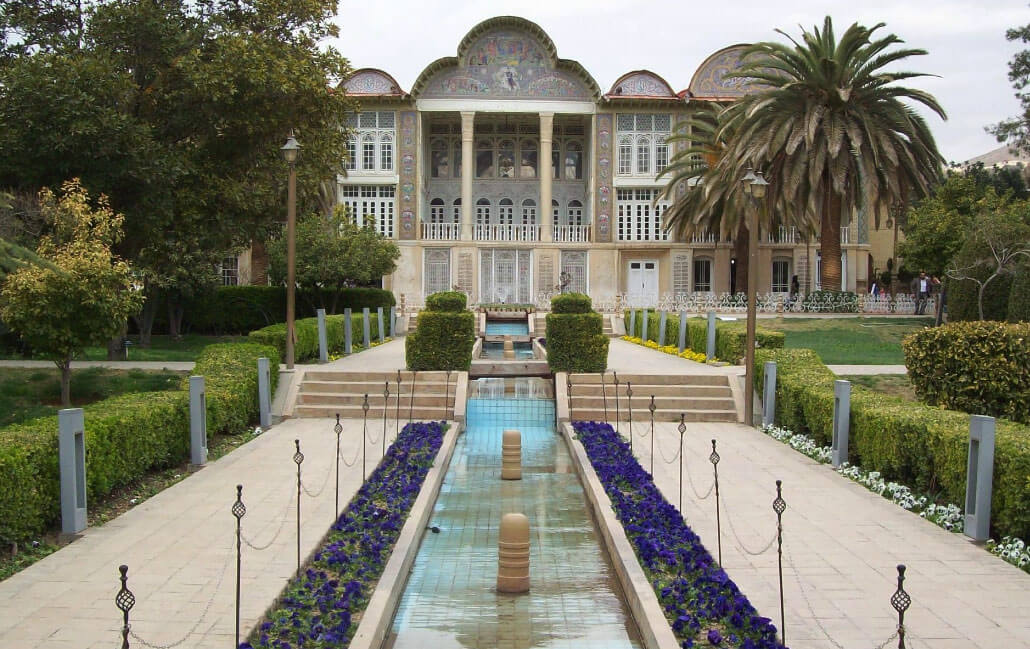
The most interesting buildings in Shiraz are located in the old part of the town. Among them are about a dozen mosques, some with bulb- shaped domes, and others with pear shaped domes and cupolas. These mosques are mostly scattered in among the old houses.
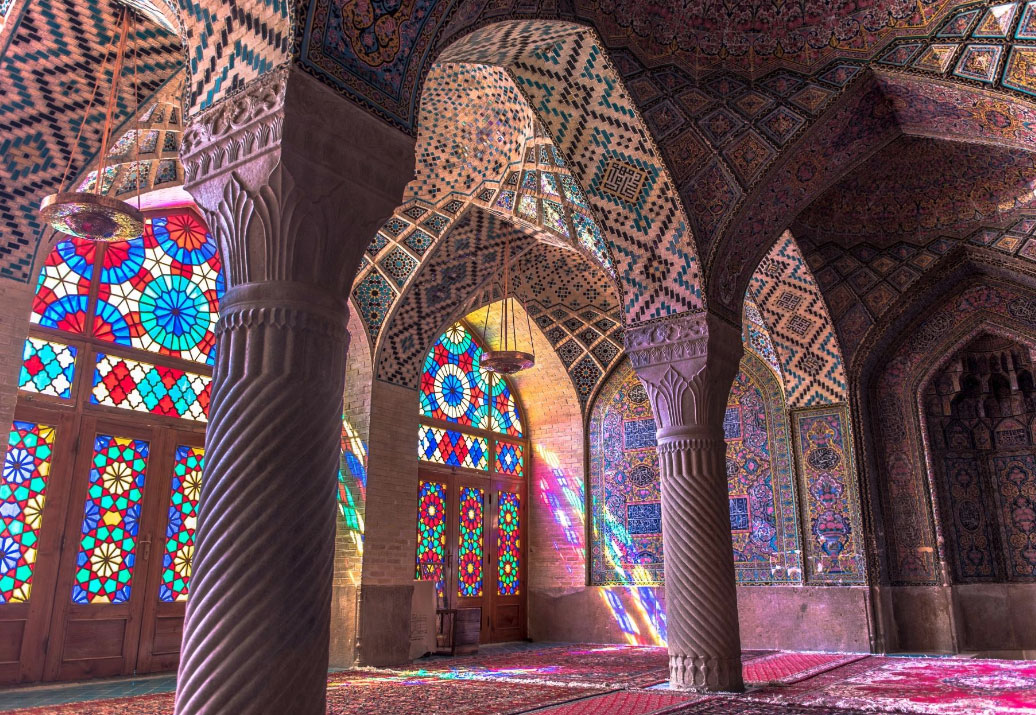
The Masjid-e-Vakil (the Regent Mosque) has an impressive portal containing faience panels in floral designs with various shades and colors on each side. The northern iwan (verandah) is decorated with shrubs and flowers, mainly rose bushes. The ceiling in Mihrab Chamber (altar) is covered with small cupolas resting on twisted columns. Vakil Bazaar, which is close by, was built by Karim Khan Zand. Here silversmiths and jewelers still apply their trades of exquisite inlay work. Persian carpets and other traditional Persian handicrafts may also be purchased in the Vakil Bazaar.
The first Capital of Fars, some 2500 years ago, was Pasargad. It was also the capital of Achaemenian King Cyrus the Great. The ceremonial capital of his successor, Darius, and his son Xerxes, was Persepolis. Today, only the ruins of these two capitals remain. Stakhr was another capital of Fars. It was established by the Sassanians and lasted until Shiraz finally assumed the role of the regional capital.
About 50 km. Northwest of Shiraz, at the foot of the Rahmat Mountains, one encounters the vast platform and remains of Persepolis, the grand ceremonial Capital built by Darius I and his successors some 2500 years ago. Archeologists are still combing through the debris and ashes that have covered Persepolis since Alexander the Great destroyed it in 330 BC. Most of the structures have already been revealed.
Pasargad is located about 77 km away from Persepolis. It was built by Cyrus the Great. Among the interesting sites at Pasargad is a stone platform 80 m. long and 18 m. wide. It is believed to have been the foundation of a palace. Close by are the ruins of a building called the “Prison of Solomon” which was probably a fire temple.
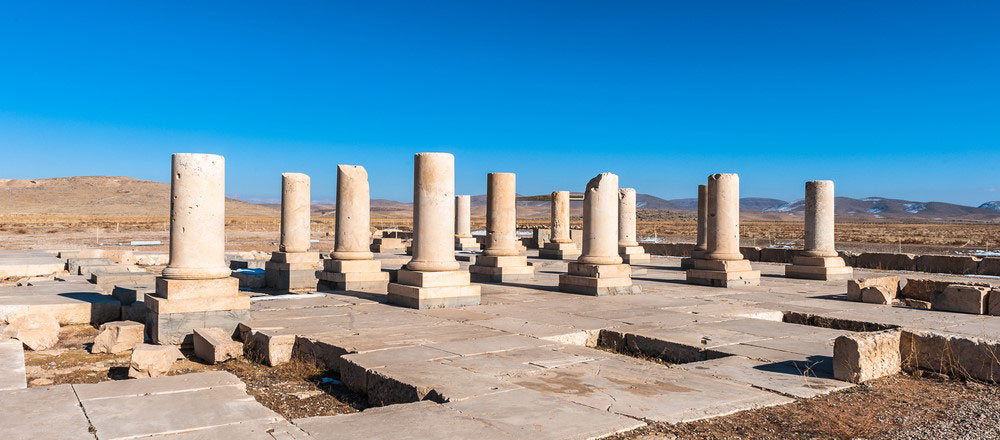
The most important monument in Pasargad is undoubtedly the tomb of Cyrus the Great. It has seven broad steps leading to the sepulcher, which measures 534m. in length by 531m in width and has a low and narrow entrance. When Alexander the Great looted and destroyed Persepolis, he paid a visit to the tomb of Cyrus. It is recorded that he commanded Aristobulus, one of his warriors, to enter the monument. Inside he found a golden bed, a table set with drinking vessels, a gold coffin, some ornaments studded with precious stones and an inscription of the tomb which reads:
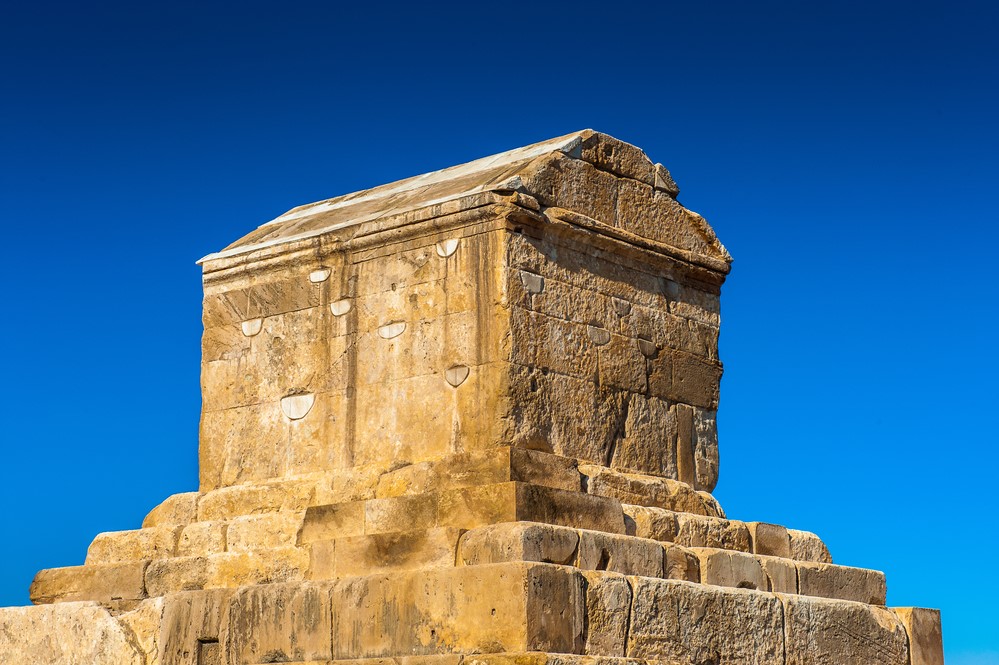
“Passer-by, I am Cyrus the Great, I have given the Persians an empire and I have ruled over Asia. So do not envy me for this tomb.”
Shiraz is one of the most important tourist attractions in Iran.
Yazd
Yazd is located in the central part of Iran. The neighboring Kavir Loot (Loot desert) and the lack of rainfall give this province a dry climate.
Sheer Kooh’s peaks (Sheer mountains), in the south, are covered with snow year round. Yazd is called the windy city because the floating sand of the desert is the main geographical feature of the province. It has dry hot summers and cold winters.
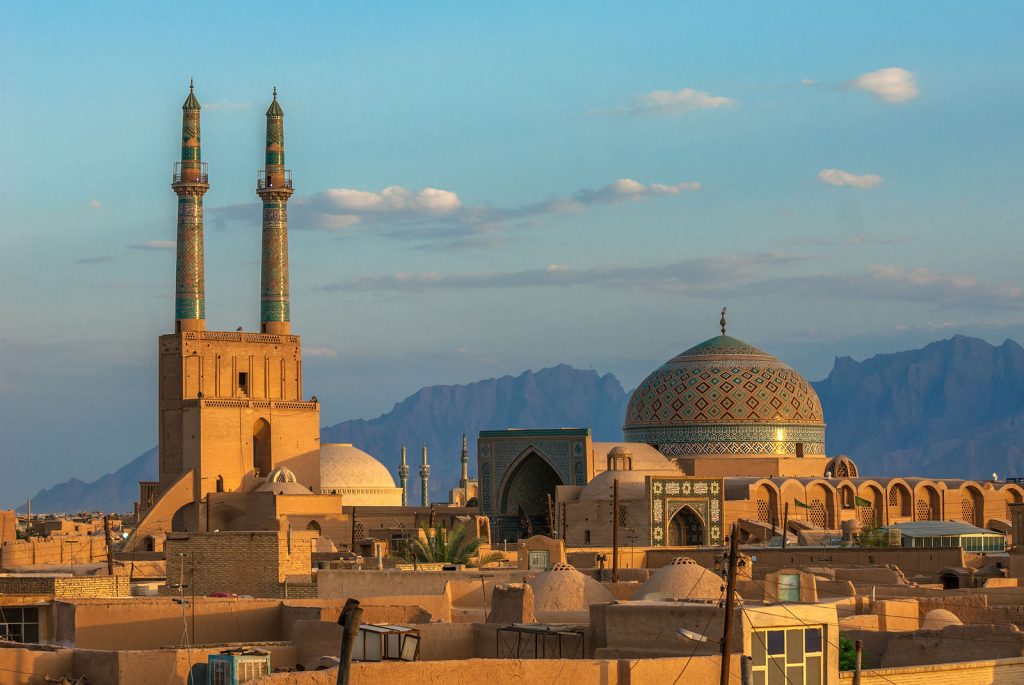
According to some historians, Yazd was established by Yazdegerd I, of the Sassand Dynasty (339-420 AD). Because of the immense deserts, the Mongols did not invade this city, As a result, many poets, artists and scholars migrated to Yazd. During this period numerous schools, mosques and mausoleums were build in this city.
Yazd dates from the Sassanid period. The geographical features of this region have made people develop special architectural styles. In the older part of the city, most houses are built of mud-bricks and have domed roofs. These materials serve as insulation, preventing heat from passing through. The majority of the people live in urban areas. Muslims constitute the majority of the population while Zorastrians and Jews are the minorities. Yazd province is rich in minerals such as iron, lead, zinc, copper and uranium.
The mosque Masjid-e-Jame dates back to the 11th century. This mosque has a magnificent portal and two lofty minarets. The tile-work on the altar and dome are fascinating. An extraordinary blend of grandeur and finesse, this mosque is a treasure house of Islamic architecture. UNESCO has recognized Yazd as a city having the second oldest architecture in the world.
Adjacent to the mosque is a library containing an exquisite collection of ancient manuscripts.
The complex of Amir Chakhmaq consists of a mosque, a public bath, a caravansary (inn) and one mausoleum. This complex was founded by the Governor’s wife in the 16th Century.
The Mausoleum of Seyyed Rokn-ed-Din is an edifice with a beautiful portal, a great dome, and fascinating tile-work. There are epigraphs in Kufic scripture on the plasterworks of the interior.
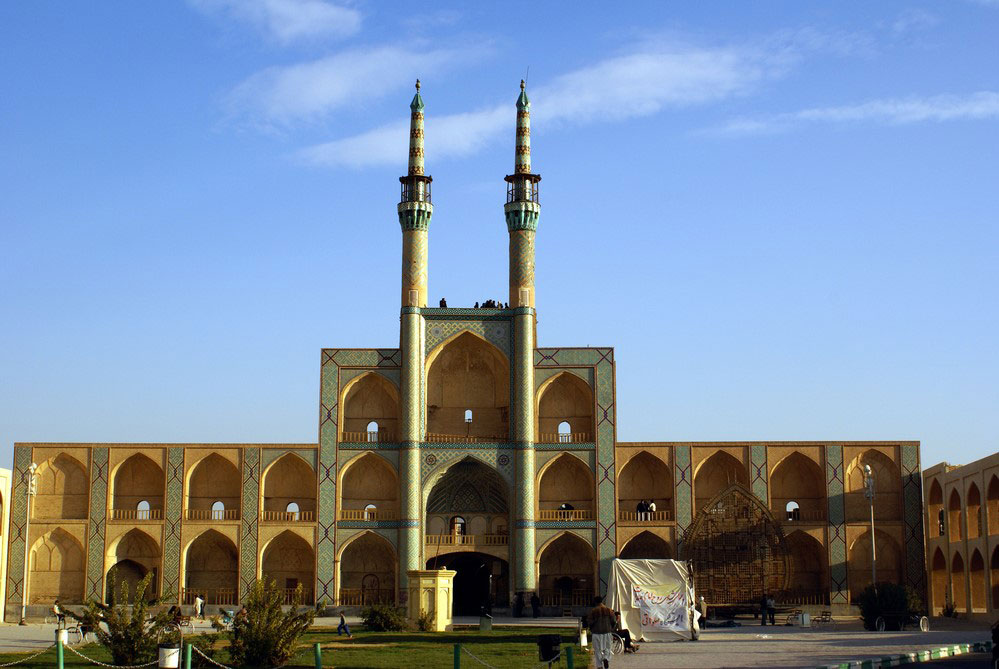
The Complex of Bagh-e-Doulat was the governor’s residence in the past. The most impressive feature of this complex is a building with ventilation structures (badgir) on the roof with a brook under it. The air enters and passes through the flowing water and cools the air inside the buildings. Latticed doors and stained glass windows are another interesting features of the building.
The Fire Temple of Zoroastrians was built on a hill and is encircled by evergreen trees. Inside the temple there is a fire that has been burning for 700 years. The capitals of the pillars and the detailing on the architecture of the temples is remarkable.
There are two impressive building on the hills outside the city called the Towers of Silence, In olden days, Zorastrians laid the dead bodies on the towers to be exposed to vultures until no flesh remained on them.
Isfahan
The province of Isfahan lies to the southeast of the central province, almost in the heart of Iran. This city, once the capital of Iran, is now only the administrative headquarters of the province. It lies about halfway between Tehran and Shiraz. Choosing Isfahan as his capital, Shah Abbas the Great made it a large and important city. In the 17th century it was given the title of Isfahan is half of the world. Today it has an estimated population of 2.1 million people.
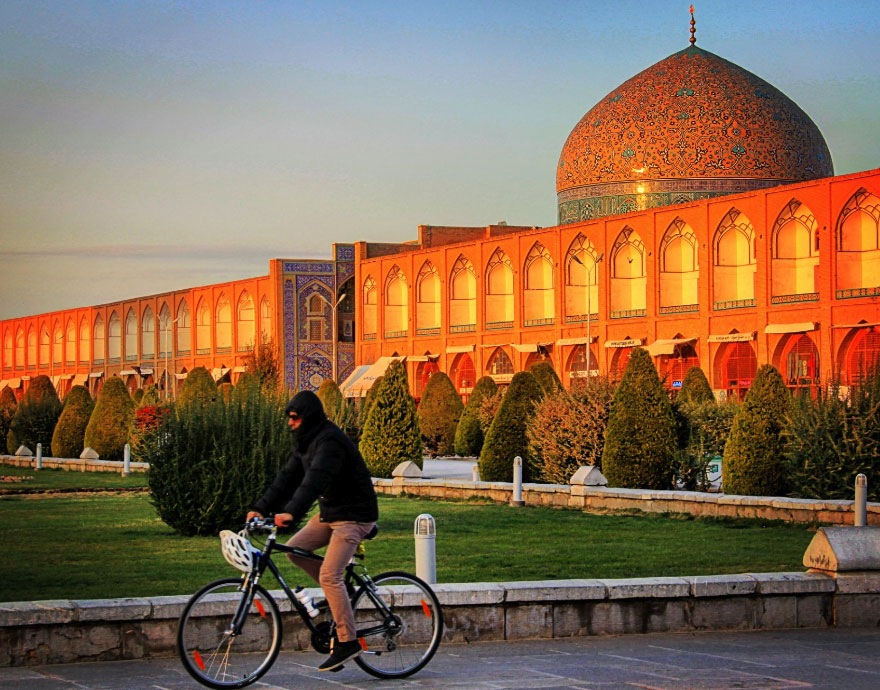
Of all the cities in Iran, Isfahan is perhaps the richest in historical and architectural wealth. In 640 AD it was conquered by the Muslims. During the Islamic era, it has endured battles and dreadful setbacks and it has seen prosperous times. Once, a conqueror called Timur of Mongol is said to have slain about 200.000 of its citizens because they resisted his warriors.
The Safavid Dynasty ushered in Isfahan’s golden age in the later part of the 17th century. Under the new rulers and especially during the reign of Shah Abbas the Great, Isfahan again revealed in its glory. It’s reputation soon spread throughout the civilized world. The Safavid Kings ruled nearly 150 years and this city was their capital. Schools, mosques, and magnificent buildings were built, while science, architecture, handicrafts, decorative arts, calligraphy and miniature paintings flourished. Fortunately, most of Isfahan’s former glory has survived or is being restored. New parks, roads, colleges and factories (including a massive steel mill) have also been built in recent years.
Chehel Sotun or Forty Pillars was built by Shah Abbas II as a hall of audience for official functions. It contains a garden covering an area of 26 acres. Today, the building stands among ancient trees in a large portion of the original garden. The immense verandah of the palace sits by a huge pool which reflects the numerous columns. The upper part of the large audience hall is covered with paintings showing such scenes as Shah Abbas feasting and Shah Ismail and Shah Tahmasp entertaining Homayoun the King of India. On the walls of the other rooms there are miniatures, portraits and works of eminent master artists of the period.
Imam Mosque was also built in the reign of Shah Abbas. The tiles and architecture of this mosque are amazingly superb. Its minarets are 48 meters high.
On the eastern side stands the low domed Masjid-e-Sheikh Lotfollah. This mosque was dedicated to the saintly uncle of Shah Abbas and was used as the King’s private worship place during his life.
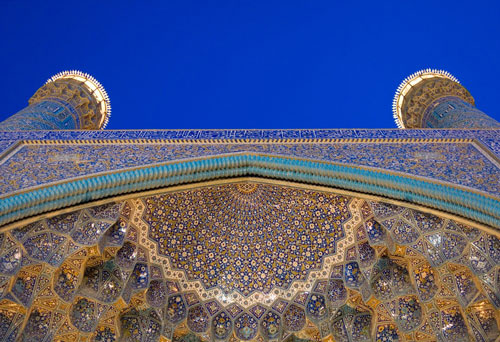
The Madrasseh Chahar-bagh, a theological school, was constructed by Scholar’s chambers society and it is the pride of the last Safavid King, a devoted Muslim ruler. He owned part of the north side of this building.
Ali Qapoo Palace is situated to the west of Naqsh-e-Jahan Square. This building belongs to the Safavid period. It was used for the reception of the ambassadors and envoys from other countries. Ali Qapoo is a six story building with numerous rooms. The plasterwork and paintings are extremely impressive.
Hasht Behesht Palace Is a palace built the the 16th century during the reign of the Shah Soleiman II. It is located near the Chahar Bagh Avenue and opposite the present Sheikh Bahai Avenue. Painted ceilings, tile works and murals make this Palace worth the visit.
The Pol Khaju bridge was built by the order of Shah Abbas II at the entrance of the Esfahan-Shiraz road. It’s storied recesses, galleries and arcades, the splendid tile-work, the arches of the upper booths and lower spans, and particularly the alcoves located in the center are the important features of this bridge.
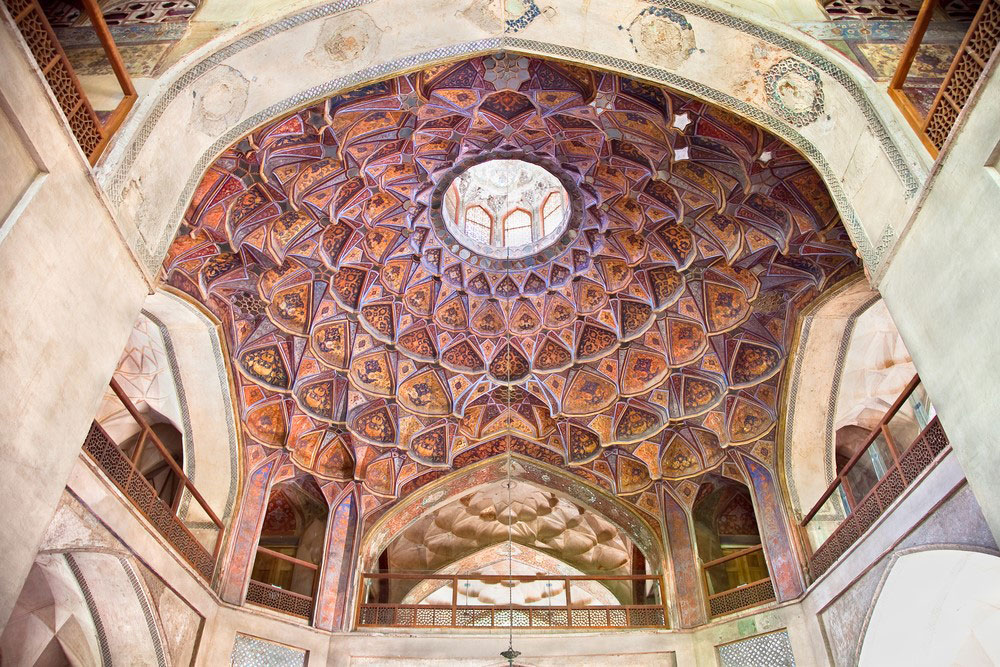
Tehran
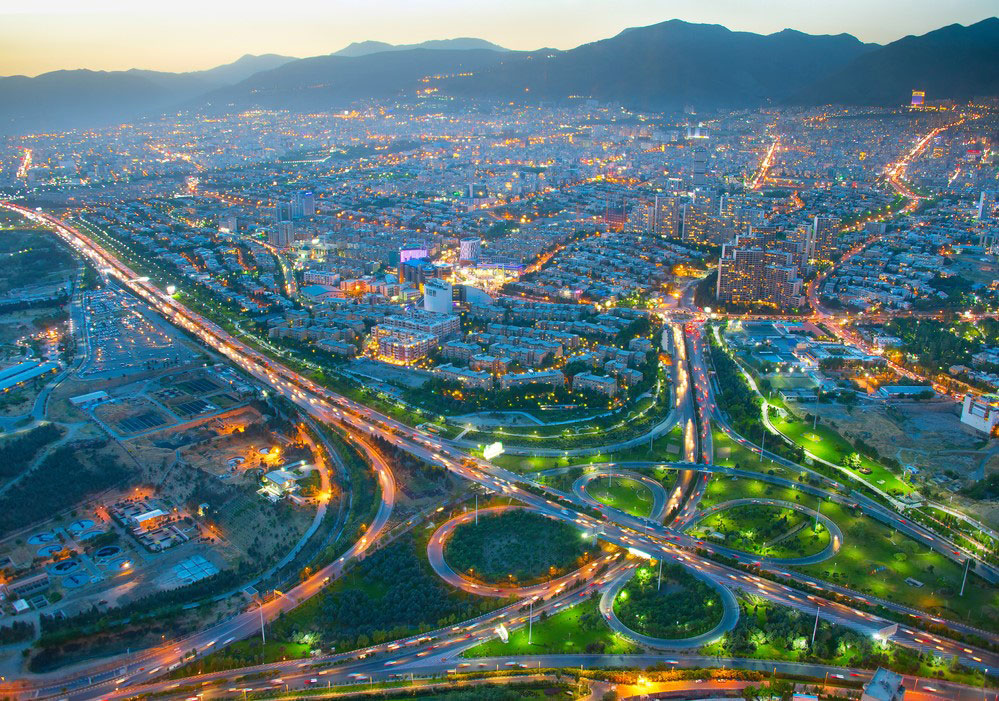
Tehran has a unique fascinating character. It lies on an incline some 1200 meters above sea level at the southern foothills of the mighty Alborz mountain range. The towering peaks of Alborz are bare and foggy in the summer and heavily covered with snow in the winter. Tehran’s climate is dry. It has mild winters, but cold snaps and snow storms are not unusual in the winters. Spring and autumn are cool and pleasant with occasional showers. In the summer it can be very hot.
In less than two centuries, Tehran has grown from a tiny village to the capital of the world’s oldest empire. Considering the history of Iran, Tehran is not an old city; it celebrated its 200th anniversary in 1992. In the early 1920’s, Tehran was still a sleepy town. Today it is a busy metropolis with some fifteen million inhabitants, or about one-fifth of Iran’s population.
Tehran has an abnormally high density of motor traffic because of low gasoline prices in the country. At the time of the first Qajar kings, Tehran became the country’s capital. Later, at the time time of Nassereddin shah, the city’s urban development plan was prepared. With the fall of the Qajar dynasty, Tehran soon took the shape of a modern city and the construction of new government buildings, streets, recreation centers and universities began. The old gates and buildings were replaced by modern architecture such as shops, cinemas, hotels, residences, and a magnificent new opera house that rivals those in Europe.
The Bazaar is a unique place to visit, particularly for those who have never seen a Middle Eastern market.
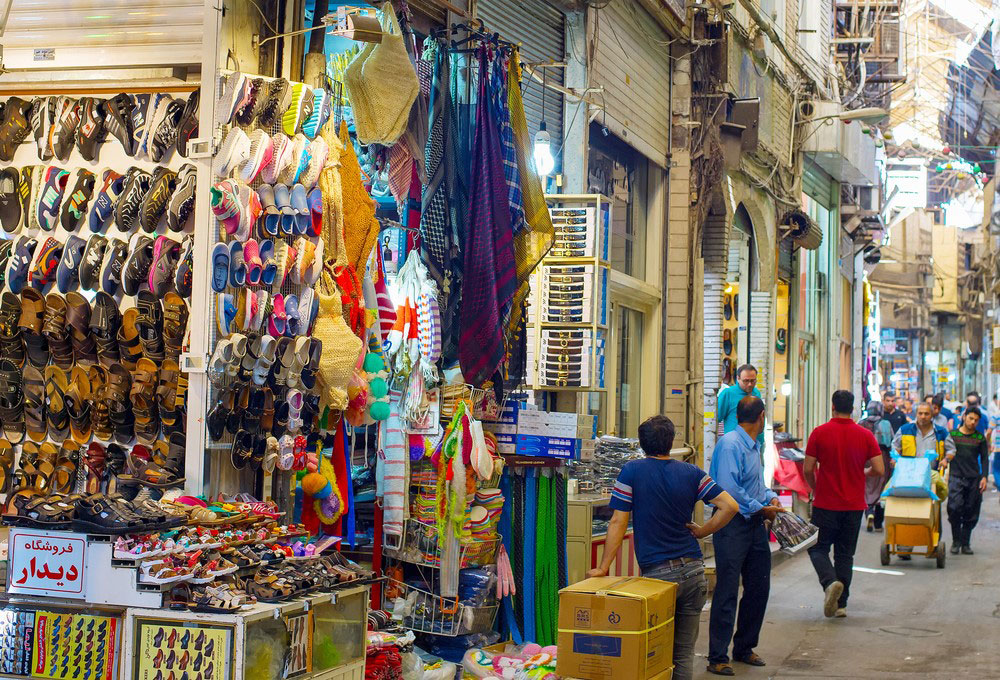
The Golestan Palace ( palace of Roses), built in the 19th century as a residence of the Qajar sovereign, is now very like a museum. It has magnificent pieces of art such as the Peacock Throne, made in India, which is studded with gems. It also houses miniature paintings, illuminated manuscripts, and its hall of mirrors is one of a kind in the world.

Next to Golestan Palace is the Masjid-e-Imam and the Masjid-e-Jomeh (Friday Mosque) which are examples of the religious architecture of the Qajar period.
The treasures of Iran are housed in the Central Bank. The world’s most exotic display of diamonds, rubies, emeralds, all kind s of show pieces, and massive gold gems are exhibited in a vault of the Central Bank (Bank Markazi). Darya-e-Noor, or the ocean of lights, which is the world’s largest diamond, and the imperial state crown, which was used in the ex-Shah’s coronation ceremony, are also included in the collection in the Central Bank.
